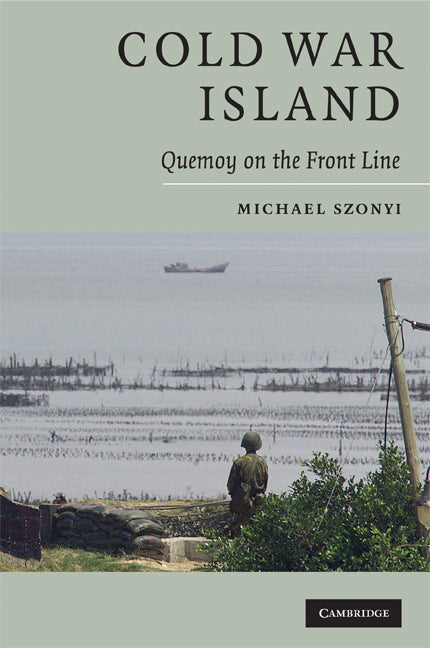Freshly Printed - allow 8 days lead
Couldn't load pickup availability
Cold War Island
Quemoy on the Front Line
A discussion of the history of the island of Quemoy during the Cold War.
Michael Szonyi (Author)
9780521726405, Cambridge University Press
Paperback, published 17 July 2008
328 pages, 32 b/w illus. 2 maps
22.6 x 15.1 x 1.9 cm, 0.52 kg
'Michael Szonyi … effectively uses the former to elucidate the latter in this first detailed account in English of Quemoy …Szonyi's book reminds us why the island mattered during the 1950s and 1960s, and offers a detailed description of the local impact of Cold War conflict.' The Journal of Asian Studies
During the height of the Cold War in the 1950s the small island of Quemoy in the Taiwan Strait was the front line in the military standoff between Chiang Kai-shek's Republic of China and Mao Zedong's People's Republic. Local society and culture were dramatically transformed. Michael Szonyi uses oral history, official documents, and dissident writings to convey the history of the island during this period. In so doing, he sheds light on the social and cultural impact of the Cold War on those who lived through it, as well as on the relationship between China, the United States and the USSR at this critical moment. By analysing the effects of Quemoy's distinctive geopolitical situation on the economy, gender and the family, and citizenship and religion, the book provides a new perspective on the social history of Cold War relations, showing how geopolitics can affect individual lives and communities.
1. Introduction: ordinary life in an extraordinary place
Part I. Geopoliticization Ascendant: 2. The battle of Guningtou
3. Politics of the war zone, 1949–1960
4. The 1954–55 artillery war
5. Militarization and the Jinmen civilian self-defense forces, 1949-1960
6. The 1958 artillery war
Part II. Militarization and Geopoliticization Change Course: 7. The 1960s: creating a Model County of the Three Principles of the People
8. The 1970s: combat villages and underground Jinmen
Part III. Life in Cold War-Time: 9. Combat economy
10. Women's lives: military brothels, parades and emblems of mobilized modernity
11. Ghosts and Gods of the Cold War
Part IV. Demilitarization and Post-militarization: 12. Demilitarization and post-militarization
13. Memory and politics
14. Conclusion: redoubled marginality.
Subject Areas: Geopolitics [JPSL], International relations [JPS], Military history: post WW2 conflicts [HBWS], History of the Americas [HBJK], Asian history [HBJF]


